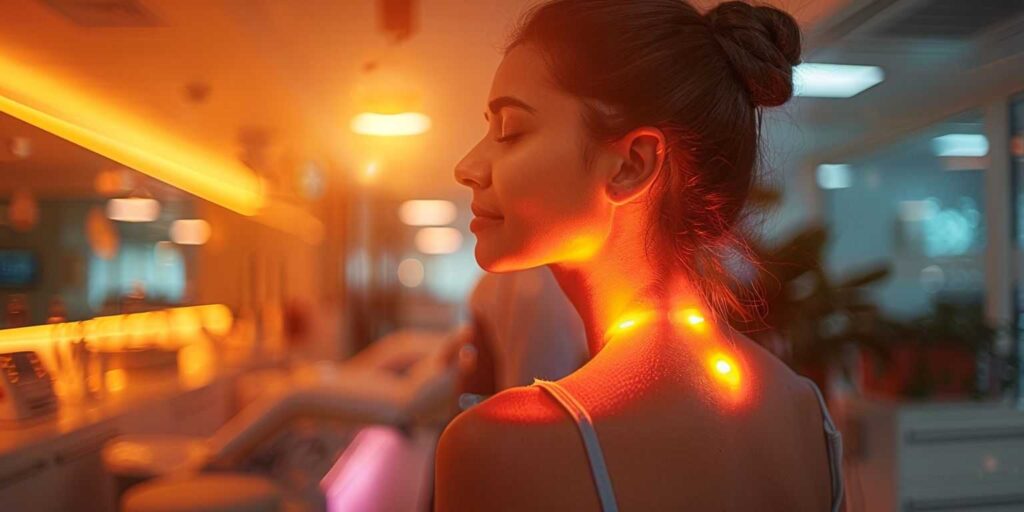Thermotherapy for Circulation: How Heat Benefits Your Health
Thermotherapy has established itself as a therapeutic technique used in the field of health and wellness to promote relaxation, relieve pain, and, above all, improve circulation. Thanks to the benefits of heat applied locally or generally, this technique allows stimulating blood flow, which proves beneficial to the body in multiple ways. In this article, we will delve into how thermotherapy influences circulation, its practical applications, benefits, and considerations, all with an approach aimed at improving the understanding of this technique and its uses in health and beauty centers.
What is Thermotherapy?
Is a treatment that uses heat to alleviate different conditions and improve general well-being. The application of heat helps dilate blood vessels, increasing blood and oxygen flow to the treated area. This increase in circulation favors muscle recovery, relieves pain, and reduces tension in the body, making it an effective tool for those seeking to improve their health through non-invasive and natural methods.

Benefits of Thermotherapy for Circulation
Improving circulation is one of the most important benefits that thermotherapy offers. Next, we will delve into how heat acts on the circulatory system and what effects it has on the body.
1. Dilation of Blood Vessels
When we apply heat, whether through hot baths, thermal compresses, or saunas, the blood vessels expand, allowing blood to flow more easily. This dilation facilitates the transport of nutrients and oxygen to the tissues, thus improving cell health and accelerating the recovery process from injuries or muscle tension.
2. Reduction in Blood Pressure
Thermotherapy not only helps dilate blood vessels but also contributes to reducing blood pressure. By promoting more fluid blood circulation, the heart can work more efficiently, which positively impacts blood pressure. For people with mild hypertension, thermotherapy can be an ideal complement to their treatment, always under medical supervision.
3. Stimulation of the Lymphatic System
Heat helps activate the lymphatic system, responsible for eliminating toxins and waste from the body. By improving circulation, lymphatic drainage is facilitated, allowing for more effective waste elimination. This not only benefits blood circulation but also contributes to improving the body’s immune function.
4. Relief of Muscle and Joint Pain
The application of heat increases blood flow in painful areas, helping to reduce muscle and joint stiffness. When circulation improves, more nutrients and oxygen are supplied to the muscles, favoring their recovery and relieving pain. This is one of the reasons why thermotherapy is common in physiotherapy and muscle recovery treatments.

Types of Thermotherapy and their Applications in Health and Beauty Centers
There are various types, that can be applied in health and beauty centers, each with specific characteristics and applications. Next, we’ll explore the most common ones and their impact on circulation:
Moist Heat Thermotherapy
Moist heat, such as that generated in saunas or steam baths, is especially effective for improving circulation. Humidity contributes to the heat penetrating more deeply into the body, facilitating the dilation of blood vessels and significantly improving blood flow.
Dry Heat Thermotherapy
Dry heat, applied through thermal compresses or infrared lamps, also has significant benefits for circulation. Although its penetration is lower compared to moist heat, dry heat is excellent for treatments on specific areas of the body.
Hydrotherapy and Thermal Baths
Hydrotherapy uses water at different temperatures to stimulate circulation. Thermal baths, for example, are ideal for improving circulation, relaxing muscles, and relieving stress. This technique is widely used in spas and wellness centers.
How Does Thermotherapy Improve Circulation in the Scalp?
Thermotherapy is also beneficial for circulation in specific areas, such as the scalp. The increase in blood flow in this area favors the oxygenation of hair follicles, stimulating hair growth and helping to combat problems such as hair loss and lack of density.
Recommendations for an Effective Thermotherapy Treatment
To maximize the benefits of thermotherapy on circulation, it is important to follow certain recommendations. Here are some tips:
Treatment Duration and Frequency
The duration and frequency will depend on the condition being treated and the needs of each person. It is important to avoid excessive heat sessions, as this could cause undesirable effects such as dehydration or hypotension.
Hydration
Heat increases sweating, so it is essential to stay well hydrated before, during, and after the treatment. This helps prevent fluid loss and facilitates the elimination of toxins through sweating.
Consult a Professional
Thermotherapy, although a natural treatment, may have contraindications for people with heart problems, pronounced varicose veins, or certain skin conditions. Consulting a healthcare professional or therapist is essential to ensure a safe and effective experience.

Frequently Asked Questions about Thermotherapy and Circulation
Next, we’ll answer some common questions about the relationship between thermotherapy and improved circulation.
1. Is thermotherapy safe for everyone?
Is generally safe, but people with heart problems, diabetes, or high blood pressure should consult a professional before undergoing heat treatments.
2. How long is it recommended to apply thermotherapy to improve circulation?
Sessions of 15 to 30 minutes are recommended, depending on the type of thermotherapy and each person’s tolerance to heat. A professional can guide on the appropriate duration.
3. Can I use thermotherapy to improve circulation at home?
Yes, there are options like heat compresses, hot baths, and thermal blankets that you can use at home. However, it is important not to overdo it and to follow the instructions for use.
4. Does thermotherapy help reduce muscle pain?
Yes, thermotherapy improves blood flow in the treated area, helping to reduce muscle stiffness and pain. It is a common technique in physical therapy and muscle recovery treatments.
5. How many times a week is it recommended to use thermotherapy?
Depending on the type of thermotherapy and the goal, it can be used between 2 to 4 times per week. However, it is ideal to consult a professional to avoid adverse effects.
6. Can thermotherapy help with hair growth?
Yes, improving circulation in the scalp through thermotherapy can stimulate hair growth by enhancing the supply of nutrients and oxygen to the follicles.
Conclusion
Thermotherapy, applied correctly, is an effective tool to improve circulation, relieve muscle pain, and promote relaxation. By using heat to dilate blood vessels, an optimal blood flow is facilitated, benefiting both physical health and overall well-being. From health and beauty centers to home therapies, thermotherapy continues to gain popularity thanks to its numerous benefits.



